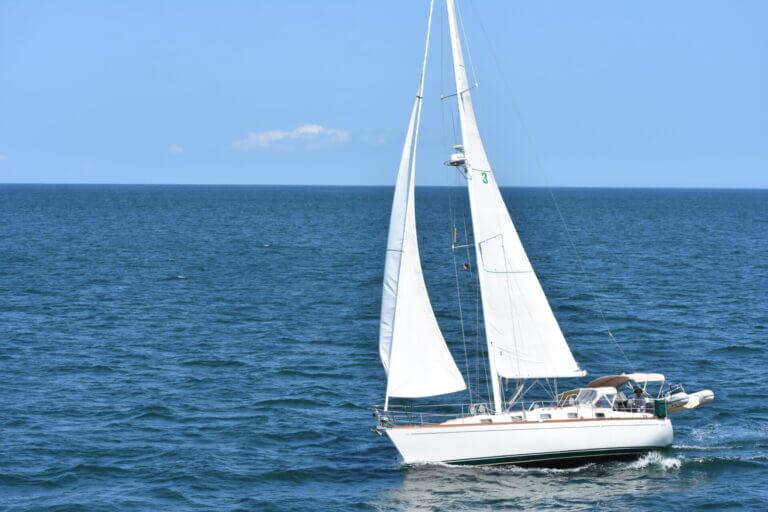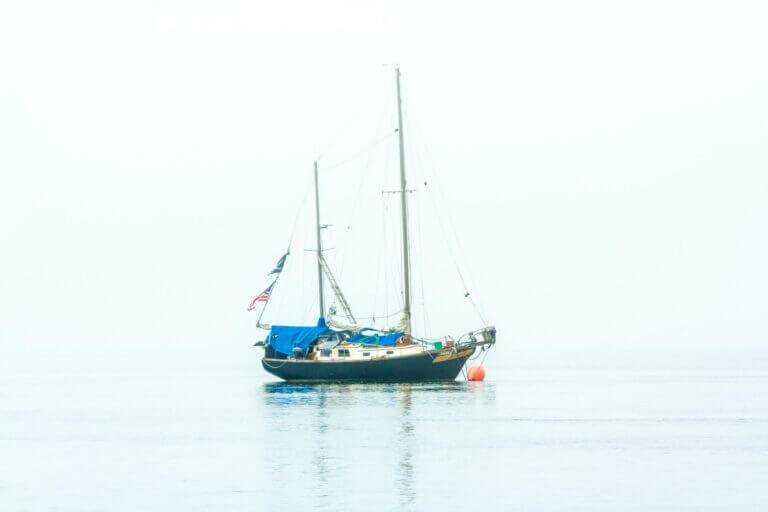Monohulls vs. Catamarans: Which One is Best for You?
If you’re considering purchasing a sailboat, you might be wondering which type of vessel is best suited for your seafaring adventures. Fear not, for we’re here to help you weigh the differences between monohulls vs. catamarans to make an informed decision.
Now, before we dive into the nitty-gritty details of hull design, sail handling, and the like, let’s take a moment to appreciate the quirky personalities of these two boats. Sloop rigged monohulls are the classic, old-school sailboats with a single mast and a triangular sail. They’re like the wise old grandpa who’s been sailing the seas for decades and has plenty of stories to tell. On the other hand, catamarans are the younger, hipper cousins of the boating world. With their twin hulls and sleek designs, they’re like the trendy millennials who are always up for an adventure.
But enough with the stereotypes, let’s get down to business. In this article, we’ll explore the pros and cons of monohulls and catamarans across various factors such as stability, maneuverability, accommodations, and cost. By the end of it, you’ll have a better idea of which boat is best suited for your sailing style and preferences. So, hoist the anchor and let’s set sail!
What are classic monohulls?
Let’s start with the basics – what exactly are classic monohulls? Well, sloops. To put it simply, a sloop is a type of sailboat with a single mast and a fore-and-aft rigged mainsail. But there’s more to these boats than meets the eye.
Sloops are the OGs of the sailing world, tracing their roots back to the 17th century. They were the go-to boats for explorers, pirates, and adventurers alike, with their simple yet effective design making them perfect for long journeys at sea. Nowadays, they’re still a popular choice for sailing enthusiasts who appreciate the classic, traditional look and feel of a sloop.
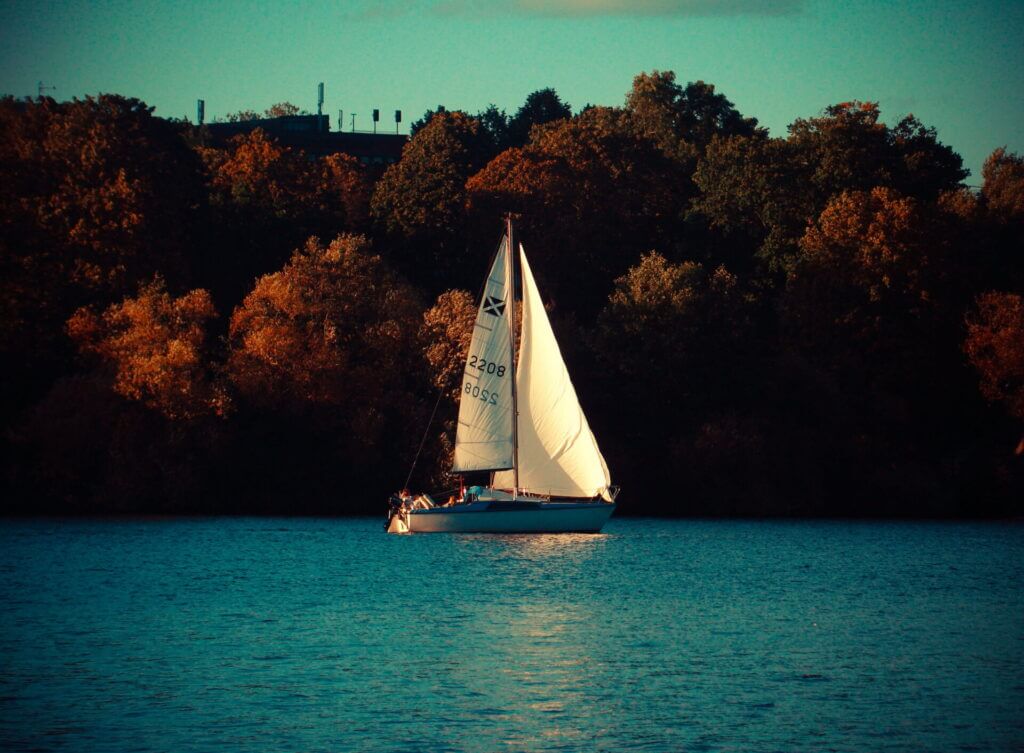
One of the defining characteristics of a sloop is its versatility. They come in a range of sizes, from small day sailers to larger offshore cruisers, and can be easily handled by a single sailor. Their rigging is relatively simple, making them a great option for beginners or those who prefer a less complicated sailing experience. But don’t let their simplicity fool you – sloops can pack a punch when it comes to speed and performance upwind.
Of course, there are some downsides to monohulls as well. Due to their single-hull design, they can be less stable in high winds or rough seas. They also tend to have less living space below deck compared to their bigger brothers. But if you’re looking for a classic, reliable, and versatile sailboat, a monohull might just be the vessel for you.
What are catamarans?
Now let’s talk about the other contender in this seafaring showdown – catamarans. These boats are a bit like the cool kids in high school – they’re sleek, modern, and always turning heads.
So, what exactly are catamarans? Well, to put it simply, they’re boats with twin hulls that are connected by a platform. But don’t let their basic design fool you – these boats are anything but ordinary. Catamarans come in a range of sizes, from small day boats to luxurious yachts, and offer a unique sailing experience that’s hard to beat.
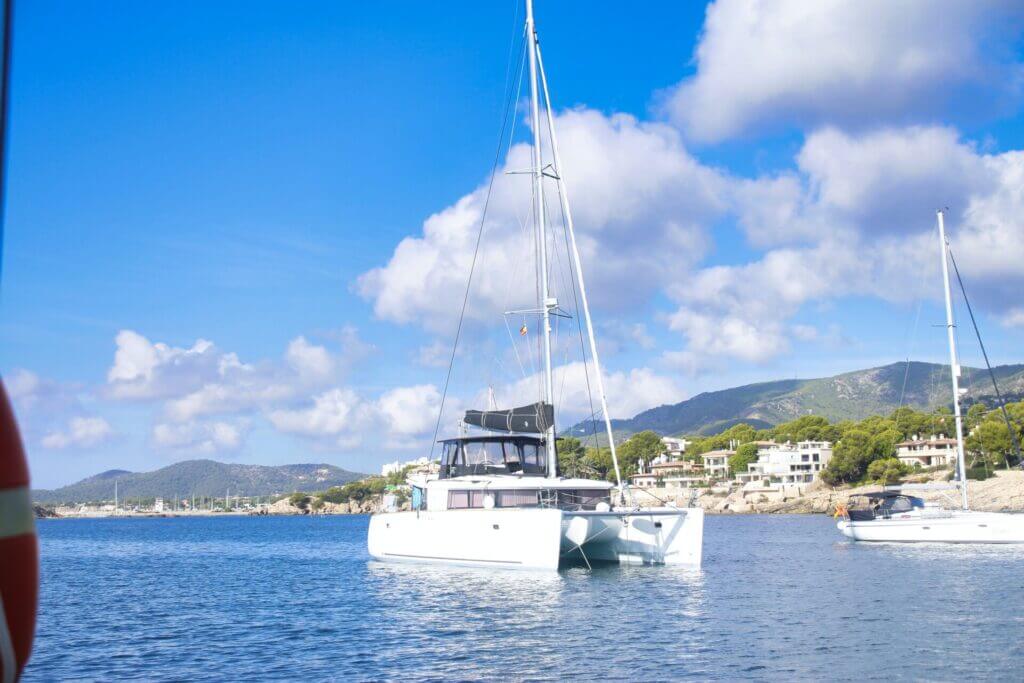
One of the biggest advantages of catamarans is their stability. With two hulls instead of one, they’re less likely to tip over or roll in rough waters. This makes them a popular choice for families or those who prefer a smoother sailing experience. They also have more living space above and below deck compared to monohulls, with spacious cabins, lounges, and kitchens that are perfect for extended trips.
But let’s not forget about performance – catamarans are no slouches when it comes to speed and agility. Their twin hulls create less drag in the water, allowing them to glide through the waves with ease. And with their sleek, aerodynamic designs, they can often outpace traditional monohull boats.
Of course, catamarans do have their downsides as well. They can be more complicated to handle compared to monohulls, and require more space to in marinas or docks. They also tend to be more expensive than other types of sailboats, but hey, you can’t put a price on luxury.
Hull design
Per definition, the hull design is the biggest differences between monohulls and catamarans.
Let’s start with monohulls. These boats typically have a single hull that’s shaped like a long, narrow tube. This design allows them to slice through the water with ease, making them great for speed and agility. The hull is usually rounded or V-shaped at the bow, which helps to cut through waves and reduce drag. At the stern, the hull flares out to create a wider, more stable base.
Now, onto catamarans. These boats have two hulls that are connected by a platform, giving them a unique look and feel. The hulls are usually wider and flatter than those of monohulls, which provides a greater amount of stability. This can be especially beneficial for those who are prone to seasickness or prefer a smoother sailing experience. The flat shape of the hulls also creates less drag in the water, allowing for higher speeds and better maneuverability.
Stability
When it comes to sailboats, stability is crucial for a comfortable and safe journey on the high seas. So, which type of boat – monohulls or catamarans – reigns supreme in this category?
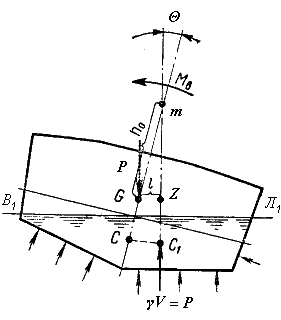
Well, let’s start with monohulls. These boats have a single hull, which means that their stability comes from the shape and weight distribution of the hull. Generally speaking, monohulls tend to be less stable than catamarans, especially in rough waters. This is because the single hull has to work harder to maintain balance, and can be more prone to tipping or rolling.
With two hulls connected by a platform, catamarans are the kings and queens of stability. The twin hulls provide a wider base and more buoyancy, making them less likely to tip over or roll in rough conditions. This can be especially beneficial for those who are new to sailing or prone to seasickness.
Maneuverability
Let’s talk about maneuverability – the art of smoothly navigating your vessel through the choppy waters. When it comes to monohulls vs. catamarans, the level of maneuverability can vary depending on the design and size of the boat.
Starting with monohulls, these boats are typically designed for speed and agility, which can translate to better maneuverability in certain situations. Their narrow hulls and single keels allow them to slice through the water and make quick turns, which can be useful in tight spots or when navigating through busy marinas.
Now, onto catamarans. With two hulls and a wider beam, these boats can be more challenging to maneuver in tight spaces. However, they do have some tricks up their sleeves. For example, many catamarans have engines that can rotate 360 degrees, allowing for greater control and maneuverability in tight spots.
Of course, when it comes to maneuverability, the skill and experience of the captain also plays a big role. A skilled sailor can make even the most unwieldy vessel dance through the water with ease, while a novice may struggle with even the most nimble of boats.
So, whether you’re piloting a monohull or a catamaran, it’s important to keep your wits about you and stay alert to your surroundings. And if all else fails, just remember the time-honored sailor’s adage – “When in doubt, let it out!”
Accommodations
Starting with monohulls, these boats typically have a more compact interior layout, with limited headroom and sleeping quarters. However, this can be a trade-off for a sleeker and more agile vessel that can slice through the waves with ease. Plus, with some creative packing and organization, a monohull can provide all the basic amenities you need for a comfortable voyage.
With their wider beam and spacious design, catamarans offer more room for living and sleeping quarters, as well as additional amenities like a galley kitchen and a bathroom. This can make for a more luxurious and comfortable sailing experience, especially for longer voyages. In addition, the two-hull design offers more space on deck for dinner parties or sunbathing in the trampolines

Of course, when it comes to accommodations, everyone’s preferences are different. Some sailors may prefer the cozy intimacy of a monohull, while others crave the roominess and luxury of a catamaran. It all depends on your personal style and needs as a sailor.
Performance
Let’s delve into the topic of performance, which is a critical factor when selecting a sailing vessel. Each sailor may have a different perspective on what constitutes optimal performance, but generally speaking, it comes down to speed and efficiency.
When it comes to speed, catamarans have an advantage in downwind performance. Their wider beam and twin hulls give them more sail area and a greater ability to surf down waves, resulting in faster speeds. However, monohulls are often faster when sailing upwind, as their pointed hull allows them to sail closer to the wind.
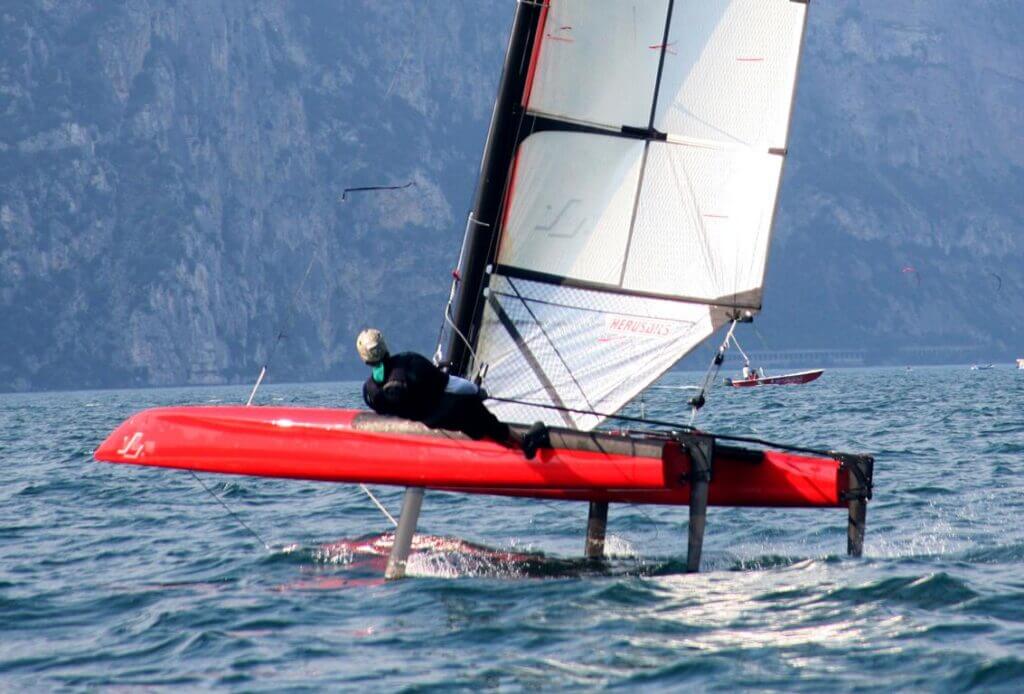
The upwind angle is an important consideration for sailors, as it affects how close to the wind they can sail. sloop rigged monohulls are known for their ability to sail at a higher angle upwind, which can be a major advantage when sailing in areas with narrow passages or limited space to maneuver. Catamarans, on the other hand, may need to tack more frequently in order to reach their destination when sailing upwind.
Maintenance
When it comes to sailing, we all know that proper maintenance is key to keeping your vessel in tip-top shape. So, when it comes to choosing between a monohull vs. a catamaran, it’s important to consider the maintenance requirements for each type of vessel.
Monohulls generally have simpler systems and structures, which can make maintenance a bit easier and more straightforward. However, the tradeoff is that they may require more frequent maintenance and repairs due to their smaller size and simpler design.
Catamarans, on the other hand, can be more complex and may require more maintenance in terms of their twin hulls, rigging, and systems. However many important systems like engines, bathrooms, or water tanks are in both hulls which give you redundancy and options. Also, their larger size can make accessing and maintaining these components a bit easier.
Regardless of which type of vessel you choose, regular maintenance is a must. From checking and maintaining the sails and rigging to ensuring the engines and electrical systems are in good working order, taking care of your vessel will ensure that you’re able to sail safely and confidently.
Cost
When it comes to the cost of a sailing vessel, there are many factors to consider. Let’s take a closer look at how monohulls vs. catamarans stack up.
First off, monohulls are generally considered to be more affordable than catamarans, both in terms of the initial purchase price and ongoing maintenance costs. This is due in part to their simpler design and smaller size, which requires less materials and labor to build and maintain.
On the other hand, catamarans can be quite costly to purchase and maintain, especially if you opt for a larger or more luxurious model. The wider beam and heavier construction of a catamaran can also mean higher slip fees and storage costs at marinas. But don’t let that deter you! If you have the means and the desire for a more spacious and comfortable sailing experience, a catamaran might be worth the investment.
Of course, the cost of a sailing vessel is just one piece of the puzzle. You’ll also need to consider other expenses like fuel, insurance, and ongoing maintenance and repairs. And let’s not forget the most important cost of all: the cost of living your best life on the open sea!

So weigh your options carefully, and remember that the true value of a sailing vessel goes far beyond the price tag. May the winds of fortune guide you to the vessel of your dreams, and may you sail with joy and a full wallet!
Resale value
Resale value is an important consideration when it comes to buying any type of vessel, and monohulls and catamarans are no exception. Generally speaking, catamarans tend to hold their value better than monohulls due to their popularity among sailors and their reputation for being spacious and comfortable. However, resale value can also depend on the specific make and model of the boat, as well as its age, condition, and location.
Of course, there are always exceptions to the rule. Some monohulls may have a cult following and fetch a higher price on the resale market, while some older catamarans may not hold their value as well as their newer counterparts. Additionally, factors such as maintenance, upgrades, and customization can also affect resale value.
Conclusion
In conclusion, when it comes to monohulls vs catamarans, there is no one-size-fits-all answer. Each boat has its own advantages and disadvantages, and the decision ultimately depends on your personal preferences, needs, and sailing goals. If you have the money, looking for a faster ride downwind and don’t mind sacrificing a bit of upwind performance, a catamaran might be the way to go.
Monohull
Catamaran
Stability
Maneuverability
Accommodations
Performance
Maintenance
Cost
Resale Value
On the other hand, if you want something cheaper, prioritize sailing close to the wind and want a boat that is more easily handled in a variety of conditions, a sloop rigged monohull might be the better choice. Of course, other factors such as accommodations, and maintenance also play a crucial role in the decision-making process.
So whether you prefer the sleekness of a monohull or the stability of a catamaran, make sure to consider all the options and weigh the pros and cons carefully before making your final choice. And as with any big decision, it never hurts to consult with experienced sailors, boat dealers, or brokers to get their expert opinions. Happy sailing!





